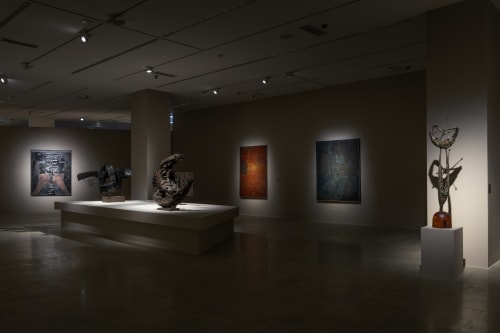MMCA Collection: Korean Modern and Contemporary Art II: MMCA Gwacheon
The permanent exhibition MMCA Collection: Korean Modern and Contemporary Art II at MMCA Gwacheon presents over 120 significant works from the museum’s collection, produced during the latter half of the 20th century. The MMCA’s inaugural location opened within Gyeongbokgung Palace on 1969, with the 18th National Art Exhibition as its opening exhibition and the systematic organization of this annual exhibition as one of its foundational objectives. The collection of artworks began in 1971, and over the past five decades, the museum has built a collection of more than 11,800 works and archival materials, with a continued focus on the acquisition, conservation, and scholarly study of artworks that reflect the history of Korean art.
Drawing from key holdings in the collection, this exhibition offers a comprehensive overview of Korean art from the late 1950s to the late 1990s, situating major works and artists within discourses pivotal to understanding Korean modern and contemporary art such as figuration and abstraction, tradition and modernity, institutional convention and avant‒garde experimentation, and aesthetic autonomy and social engagement. Thematic sections such as “The Establishment of Government and the National Art Exhibition” and “Modernist Women Artists” foreground narratives and figures that have often been marginalized in style‒or movement‒centered art histories, while sections dedicated to seminal artists such as Kim Whanki (1913–1974) and Yun Hyong‒keun (1928–2007) offer an immersive understanding of each artist’s distinct body of work.
Korean modern and contemporary art took shape amid the upheavals of Japanese colonial rule, the Korean War, industrialization, and democratization through the practices of artists attuned to these shifting realities. This exhibition revisits the ideas that sustained creative production throughout the decades, observing formal achievements made along the way from a stereoscopic perspective. In doing so, they invite viewers to explore the historical trajectories and future possibilities of Korean art as part of a continuous lineage extending into the present.








